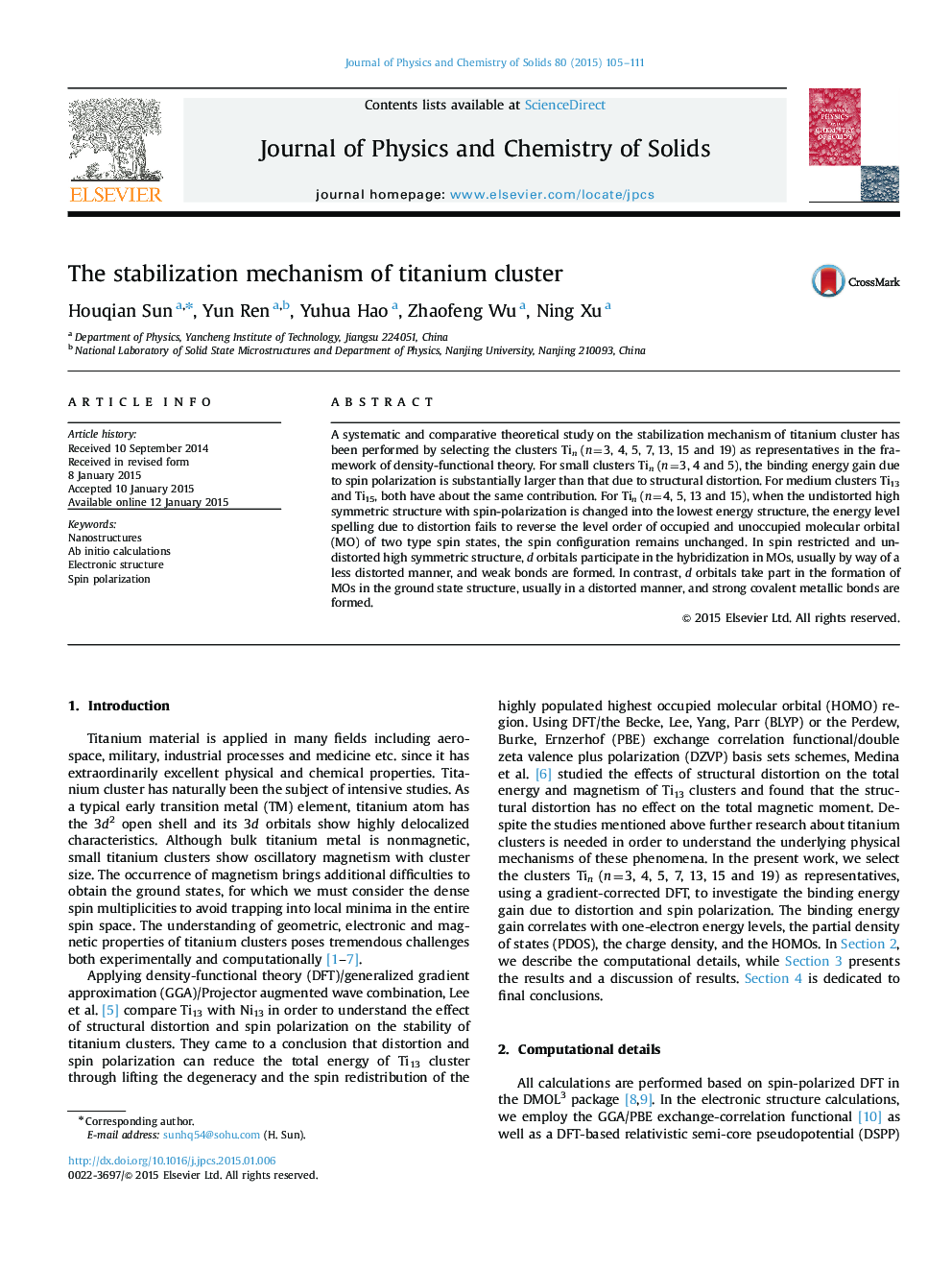| Article ID | Journal | Published Year | Pages | File Type |
|---|---|---|---|---|
| 1515551 | Journal of Physics and Chemistry of Solids | 2015 | 7 Pages |
•One -electron energy level splitting from spin polarization is much than that from distortion.•The effect of spin polarization is stronger than that of distortion for n=3, 4, 5 clusters.•The effect of spin polarization is about the same as that of distortion for Ti13 and Ti15 clusters.•Strong preferred orientational bonds are formed due to distortion and spin polarization.•The distortion has less effect on the magnetic moment of magnetic titanium clusters.
A systematic and comparative theoretical study on the stabilization mechanism of titanium cluster has been performed by selecting the clusters Tin (n=3, 4, 5, 7, 13, 15 and 19) as representatives in the framework of density-functional theory. For small clusters Tin (n=3, 4 and 5), the binding energy gain due to spin polarization is substantially larger than that due to structural distortion. For medium clusters Ti13 and Ti15, both have about the same contribution. For Tin (n=4, 5, 13 and 15), when the undistorted high symmetric structure with spin-polarization is changed into the lowest energy structure, the energy level spelling due to distortion fails to reverse the level order of occupied and unoccupied molecular orbital (MO) of two type spin states, the spin configuration remains unchanged. In spin restricted and undistorted high symmetric structure, d orbitals participate in the hybridization in MOs, usually by way of a less distorted manner, and weak bonds are formed. In contrast, d orbitals take part in the formation of MOs in the ground state structure, usually in a distorted manner, and strong covalent metallic bonds are formed.
